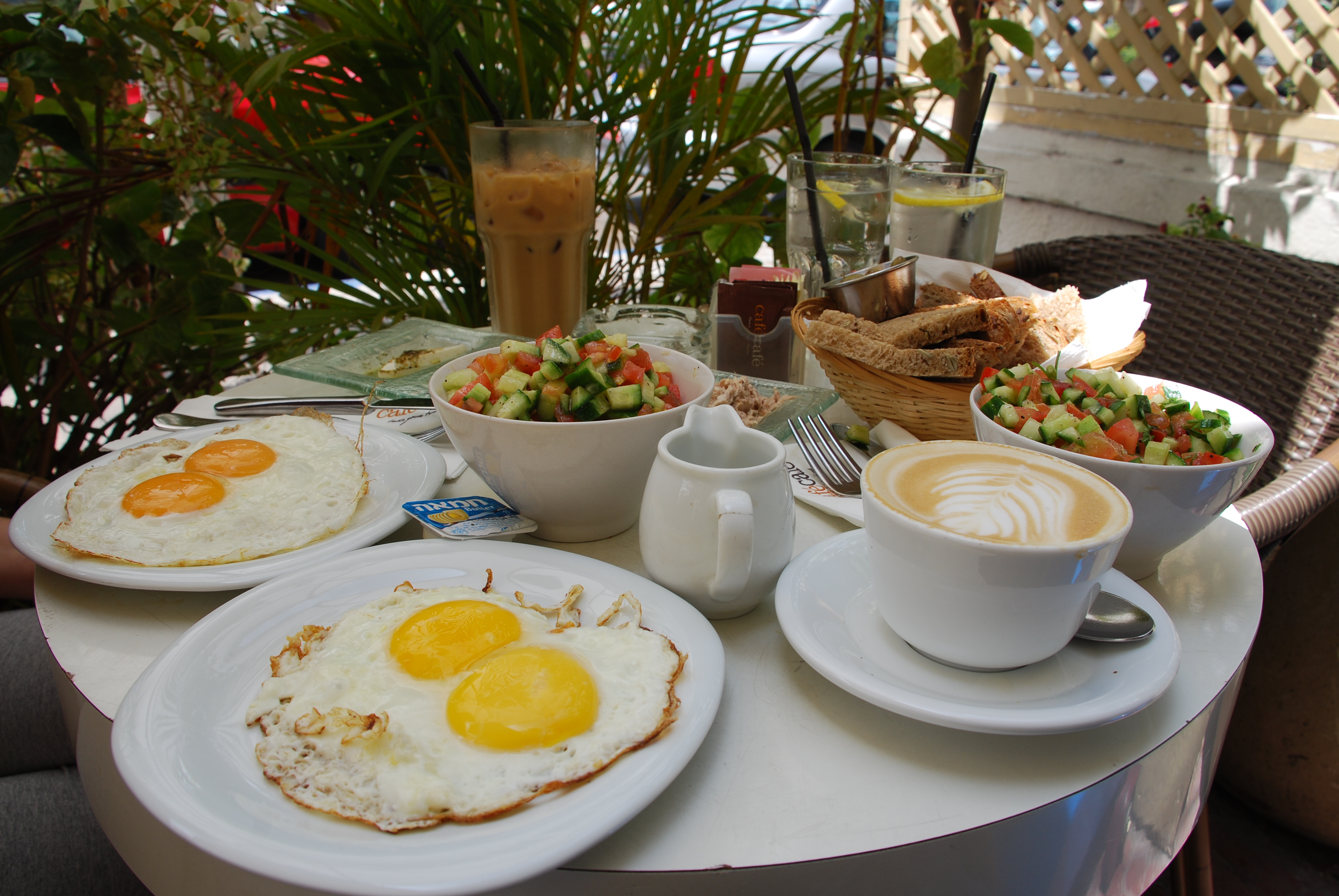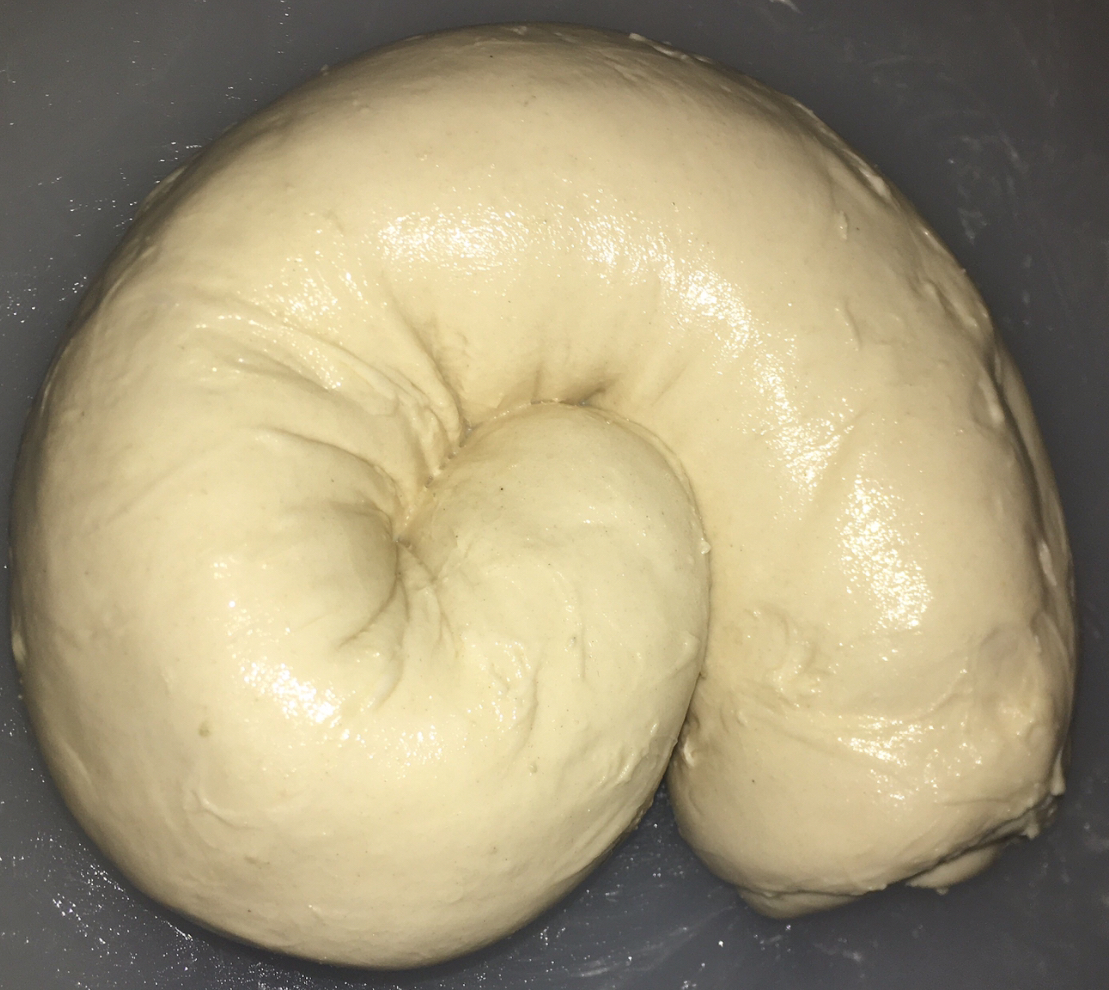|
Ziva (dish)
Ziva ( he, זיוה) is an Israeli dish made of puff pastry topped with sesame seeds, and stuffed with cheese and olives. Ziva is served at home and in restaurants. Ziva is cooked in a style similar to the Yemenite Malawach but its ingredients more closely resemble börek, both of which are also common in Israel. Ziva is usually served alongside a hot sauce (skhug), eggs and Israeli salad. Ziva is thought to have been invented by chef Neri Avneri at the Nargilla restaurant in 1989. TasteAtlas listed it as the third lowest-rated Israeli snack. See also * Malawach * Bourekas * Israeli cuisine * List of pastries This is a list of pastries, which are small buns made using a stiff dough enriched with fat. Some dishes, such as pies, are made of a pastry casing that covers or completely contains a filling of various sweet or savory ingredients. There are fi ... References {{Cuisine of Israel Israeli pastries Cheese dishes ... [...More Info...] [...Related Items...] OR: [Wikipedia] [Google] [Baidu] |
Israel
Israel (; he, יִשְׂרָאֵל, ; ar, إِسْرَائِيل, ), officially the State of Israel ( he, מְדִינַת יִשְׂרָאֵל, label=none, translit=Medīnat Yīsrāʾēl; ), is a country in Western Asia. It is situated on the southeastern shore of the Mediterranean Sea and the northern shore of the Red Sea, and shares borders with Lebanon to the north, Syria to the northeast, Jordan to the east, and Egypt to the southwest. Israel also is bordered by the Palestinian territories of the West Bank and the Gaza Strip to the east and west, respectively. Tel Aviv is the economic and technological center of the country, while its seat of government is in its proclaimed capital of Jerusalem, although Israeli sovereignty over East Jerusalem is unrecognized internationally. The land held by present-day Israel witnessed some of the earliest human occupations outside Africa and was among the earliest known sites of agriculture. It was inhabited by the Canaanites ... [...More Info...] [...Related Items...] OR: [Wikipedia] [Google] [Baidu] |
Olives
The olive, botanical name ''Olea europaea'', meaning 'European olive' in Latin, is a species of small tree or shrub in the family Oleaceae, found traditionally in the Mediterranean Basin. When in shrub form, it is known as ''Olea europaea'' 'Montra', dwarf olive, or little olive. The species is cultivated in all the countries of the Mediterranean, as well as in Australia, New Zealand, North and South America and South Africa. ''Olea europaea'' is the type species for the genus ''Olea''. The olive's fruit, also called an "olive", is of major agricultural importance in the Mediterranean region as the source of olive oil; it is one of the core ingredients in Mediterranean cuisine. The tree and its fruit give their name to the plant family, which also includes species such as lilac, jasmine, forsythia, and the true ash tree. Thousands of cultivars of the olive tree are known. Olive cultivars may be used primarily for oil, eating, or both. Olives cultivated for consumption are ge ... [...More Info...] [...Related Items...] OR: [Wikipedia] [Google] [Baidu] |
List Of Pastries
This is a list of pastries, which are small buns made using a stiff dough enriched with fat. Some dishes, such as pies, are made of a pastry casing that covers or completely contains a filling of various sweet or savory ingredients. There are five basic types of pastry (a food that combines flour and fat); these are shortcrust pastry, filo pastry, choux pastry, flaky pastry and puff pastry. Two main types of pastry are nonlaminated, when fat is cut or rubbed into the flour, and laminated, when fat is repeatedly folded into the dough using a technique called lamination. An example of a nonlaminated pastry would be a pie or tart crust and brioche. An example of a laminated pastry would be a croissant, danish, or puff pastry. Many pastries are prepared using shortening, a fat food product that is solid at room temperature, the composition of which lends to creating crumbly, shortcrust-style pastries and pastry crusts. Pastries were first created by the ancient Egyptians. The clas ... [...More Info...] [...Related Items...] OR: [Wikipedia] [Google] [Baidu] |
Israeli Cuisine
Israeli cuisine ( he, המטבח הישראלי ) comprises both local dishes and dishes brought to Israel by Jews from the Diaspora. Since before the establishment of the Israel, State of Israel in 1948, and particularly since the late 1970s, an Israeli Jewish fusion cuisine has developed.Gold, Rozann''A Region's Tastes Commingle in Israel'' (July 20, 1994) in ''The New York Times'' Retrieved 2010–02–14 Israeli cuisine has adopted, and continues to adapt, elements of various styles of Arab cuisine and diaspora Jewish cuisine, particularly the Cuisine of the Mizrahi Jews, Mizrahi, Cuisine of the Sephardic Jews, Sephardic and Ashkenazi_Jewish_cuisine, Ashkenazi styles of cooking. It incorporates many foods traditionally included in other Middle Eastern cuisine, Middle Eastern and Mediterranean cuisines, so that spices like ''za'atar'' and foods such as ''falafel'', ''hummus'', ''msabbha'', ''shakshouka'' and ''couscous'' are now widely popular in Israel.Gur, ''The Book of New ... [...More Info...] [...Related Items...] OR: [Wikipedia] [Google] [Baidu] |
Bourekas
Bourekas or burekas ( he, בורקס) are a popular baked pastry in Sephardic Jewish cuisine and Israeli cuisine. A variation of the burek, a popular pastry throughout southern Europe, northern Africa and the Middle East, Israeli bourekas are made in a wide variety of shapes and a vast selection of fillings, and are typically made with either puff pastry, filo dough, or brik pastry, depending on the origin of the baker. Etymology As knowledge of Ladino is lost among the younger generation of Sephardic Jews, Judeo-Spanish has become a "language of food". Food names have been described as "the last Judeo-Spanish remains" of the cultural memory of Ottoman-Sephardic heritage. The word ''boureka'' (or ''borekita'') is a Judeo-Spanish loanword from the Turkish ''börek''. Spanish does not have the front rounded Turkish ''ö'' sound, so the word becomes ''boreka''. As one Turkish food writer put it, "Ladino is the ''borekitas'' of the granmama". In Judeo-Spanish ''boreka'' original ... [...More Info...] [...Related Items...] OR: [Wikipedia] [Google] [Baidu] |
TasteAtlas
TasteAtlas is an experiential travel guide for traditional food that collates authentic recipes, food critic reviews, and research articles about popular ingredients and dishes. Describing itself as "a world atlas of traditional dishes, local ingredients, and authentic restaurants", it features an interactive global food map with dish icons shown in their respective regions and purportedly contains nearly 10,000 dishes, drinks, and ingredients, as well as 9,000 restaurants. History Founded in 2015 by Croatian journalist and entrepreneur Matija Babić, it took more than three years of research and development before the project launched in late 2018. The site was still in the MVP phase in early 2018 with about 5,000 dishes included. It received an honorable mention in 2018 Awwwards. Reportedly, the company does not intend to compete with the likes of Michelin guide or Tripadvisor, as it sees its niche between haute cuisine recommendations of the former and popular tourist pl ... [...More Info...] [...Related Items...] OR: [Wikipedia] [Google] [Baidu] |
Skhug
Zhug ( he, סְחוּג, s'ḥug), sahawiq (Yemeni Arabic: ) or bisbas ( Somali: ) is a hot sauce originating in Yemeni cuisine. In other countries of the Arabian Peninsula it is also called ma'booj ( ar, معبوج}). Etymology The word ''sahawiq'' comes from the Arabic root ( s-ḥ-q) which means to pestle or to crush. Varieties Varieties in Yemen include (green sahawiq), (red sahawiq), and (sahawiq with cheese, usually Yemeni cheese). ''Sahawiq'' is one of the main ingredients of ''saltah''. ''Wazif'' (traditional Yemeni dried baby sardines) is sometimes added to the ''sahawiqs ingredients and it is known as ''sahawiq wazif'' ( ar, سحاوق وزف, link=no). In Israel, one can find ("red zhug"), ("green zhug") and ("brown zhug"), which has added tomatoes. Red zhug is made with red peppers while green zhug is made with green peppers, or jalapeños. Zhug may be referred to by the generic term ( he, חריף, link=no; lit. "hot/spicy"). Also known as zhoug, it is ... [...More Info...] [...Related Items...] OR: [Wikipedia] [Google] [Baidu] |
Börek
Börek or burek are a family of pastries or pies found in the Balkans, Middle East and Central Asia. The pastry is made of a thin flaky dough such as filo with a variety of fillings, such as meat, cheese, spinach or potatoes. Boreks are mainly associated with Anatolia, the Middle East, Armenia, and also with the former Ottoman Empire, including the Balkans and the South Caucasus, Eastern European and Central European countries, Northern Africa and Central Asia. A borek may be prepared in a large pan and cut into portions after baking, or as individual pastries. They are usually baked but some varieties can be fried. Borek is sometimes sprinkled with sesame or nigella seeds, and it can be served hot or cold. It is a custom of Sephardic Jews to have ''bourekas'' for their Shabbat breakfast meal on Saturday mornings. In Bosnia and Herzegovina it has become commonplace to have borek as a breakfast food with coffee. It is commonly served with afternoon tea in Bosnia and Herzegovina ... [...More Info...] [...Related Items...] OR: [Wikipedia] [Google] [Baidu] |
Malawach
Malawach or Melawwaḥ, (; literally means "board-like bread"), is a flatbread that is traditional in Yemenite Jewish cuisine. It was brought to Israel by Yemenite Jews. Malawach resembles a thick pancake but consists of thin layers of puff pastry brushed with oil or fat and cooked flat in a frying pan. It is traditionally served with hard-boiled eggs, ''zhug'', and a crushed or grated tomato dip. Sometimes it is served with honey. History Malawach is made from the same dough as jachnun, a Yemenite Jewish Shabbat bread, and both originated as a variation of hojaldre, a Sephardic Jewish puff pastry, brought to Yemen by Jews expelled from Spain. Hojaldre later became ''"ajin"'', an enriched dough only made by the Yemenite Jews, and was not made by the non-Jewish Yemenis, according to Rabbi Gil Marks, a Jewish food historian Preparation Malawach was traditionally prepared at home by the women in the Yemenite Jewish community, and is made out of a laminated dough similar to ... [...More Info...] [...Related Items...] OR: [Wikipedia] [Google] [Baidu] |
Sesame Seed
Sesame ( or ; ''Sesamum indicum'') is a flowering plant in the genus ''Sesamum'', also called benne. Numerous wild relatives occur in Africa and a smaller number in India. It is widely naturalized in tropical regions around the world and is cultivated for its edible seeds, which grow in pods. World production in 2018 was , with Sudan, Myanmar, and India as the largest producers. Sesame seed is one of the oldest oilseed crops known, domesticated well over 3,000 years ago. ''Sesamum'' has many other species, most being wild and native to sub-Saharan Africa. ''S. indicum,'' the cultivated type, originated in India. It tolerates drought conditions well, growing where other crops fail. Sesame has one of the highest oil contents of any seed. With a rich, nutty flavor, it is a common ingredient in cuisines around the world. Like other foods, it can trigger allergic reactions in some people. Etymology The word "sesame" is from Latin ''sesamum'' and Greek σήσαμον : ''sēsamon' ... [...More Info...] [...Related Items...] OR: [Wikipedia] [Google] [Baidu] |





